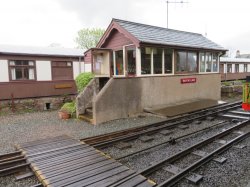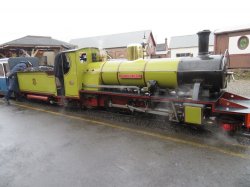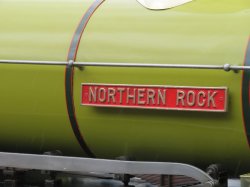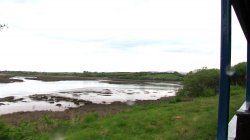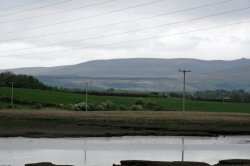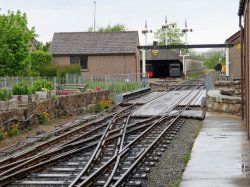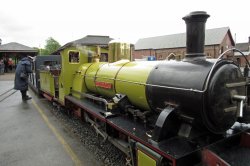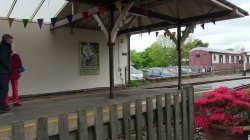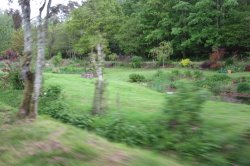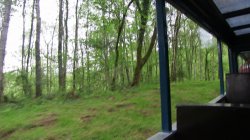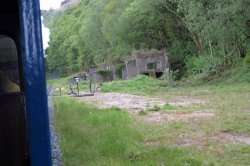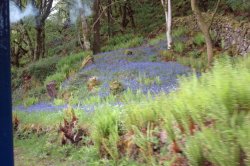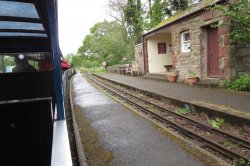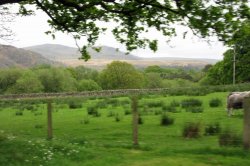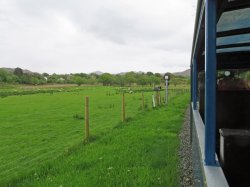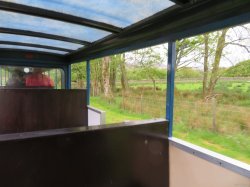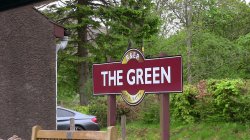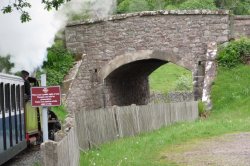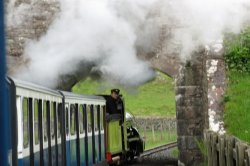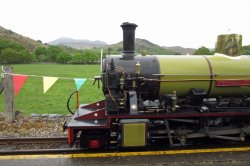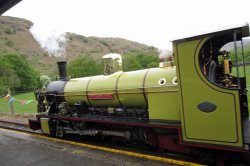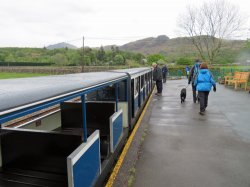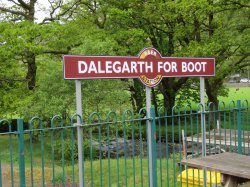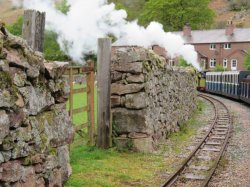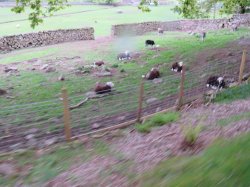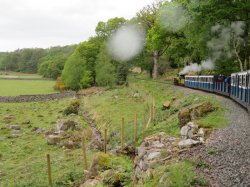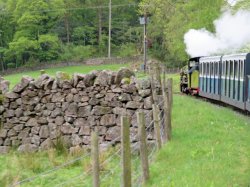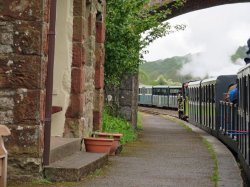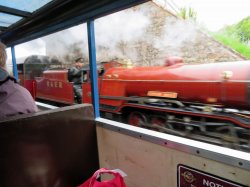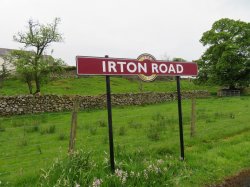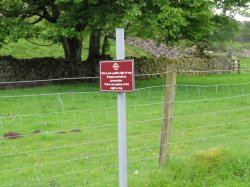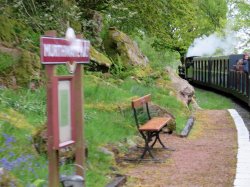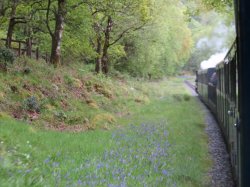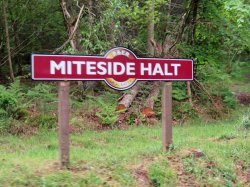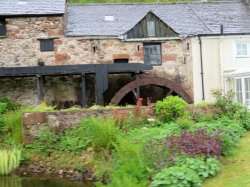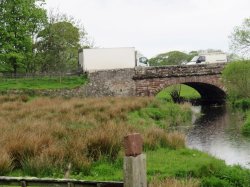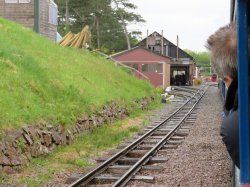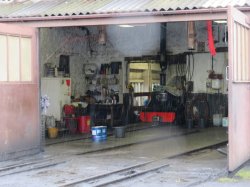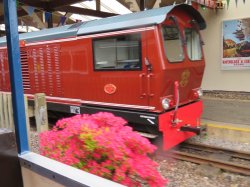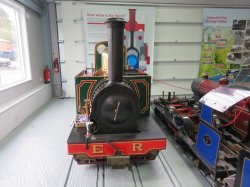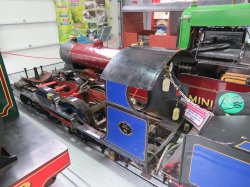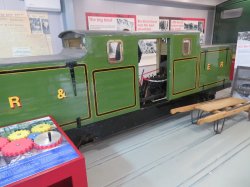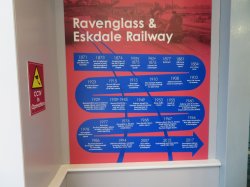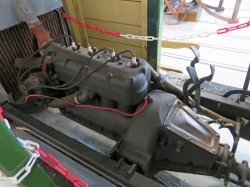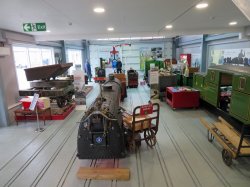 RAVENGLASS AND ESKDALE RAILWAY- Ravenglass
RAVENGLASS AND ESKDALE RAILWAY- Ravenglass
RAVENGLASS & ESKDALE STEAM RAILWAY
The Ravenglass & Eskdale Railway is one of the oldest and longest narrow gauge railways in England, known affectionately as La’al Ratty meaning “little railway“ in olde Cumbrian dialect. It was 105 years ago in April 1913 that the original 3ft line closed and in 1915 the new 15in La’al Ratty was born. Our heritage steam engines transport passengers from Ravenglass, the only coastal village located in two UNESCO World Heritage Sites, the Lake District National Park and Frontiers of the Roman Empire Hadrians Wall, to Dalegarth for Boot some 210ft above sea level.
• The line is seven miles long with a journey time of 40 minutes each way offering spectacular views over the estuaries and countryside with England’s highest mountains in the distance. There are great walks between and from the seven intermediate request stops Our cosy covered , half open and open top carriages provide the best of comfort and views as you travel up the line. Our main season runs from March until October however we operate trains during November and December for Christmas through to New Year.
• En route keep your eyes peeled for Greylag Geese, Curlew, Shelduck, Red Squirrels and Buzzards. On arrival at Dalegarth there is something for everyone, with our café serving homemade treats, a gift shop with plenty of pocket money gifts as well as great trails and walks to explore in this beautiful corner of the Lake District National Park. The Eskdale Mill is a must see when you are in Boot village, just a five minute walk from Dalegarth Station.
• The journey itself was one of Alfred Wainwright's favourites and immortalised in his Walks from Ratty and ‘Britain’s Favourite View’, Wastwater is just around the corner.
• The original Ravenglass and Eskdale Railway was a 3 ft (914 mm) line opened on 24 May 1875 to transport hematite iron ore from mines around Boot to the Furness Railway standard gauge line at Ravenglass. A tramway separated from the line just after Beckfoot along the route of the current railway and up to Gil Force. There has been dispute about the gauge. It is shown as 3 feet in records but is quoted as 2 ft 9 in (838 mm) in some books such as the ABC of Narrow Gauge Railways. This figure was believed for many years until the present company discovered a sleeper from before the line closed, with spacings between holes made by track spikes confirming the gauge was the wider one. The confusion probably stems from the fact that the line was built under the condition that it was "of a gauge not less than 2' 9" ".
• Following requests from the residents of the valley for a passenger service, the railway was upgraded to meet the minimum standards of the Board of Trade, and the first passenger trains ran in November 1876.[ It was the first public narrow-gauge railway in England. However, the cost of upgrading the line for passengers left the railway company with substantial debts which it was unable to pay off. The company was forced to declare itself bankrupt in 1877, although trains continued to run under the control of a series of receivers. Unfortunately, all but one of the iron ore mines closed within 10 years of the railway opening, and there was not enough traffic from other sources (local goods and passengers from the villages and farms of the valley) for the railway to sustain itself. In later years, the railway did become popular with summer tourists, but this was not enough to offset the railways running costs. The Summer 1898 Furness Railway timetable shows five weekday trains along the line with three on Sundays.
• In 1905, a passenger train was derailed at Murthwaite due to a combination of a defective locomotive and defective track. By 1908 the track-work was is such poor condition, it was declared unsafe for passengers by the Board of Trade. The railway closed to passengers that year. Goods trains continued to run whilst attempts were made to raise money to rebuild the railway. These attempts failed, and the railway closed completely in April 1913.
• In 1915 Wenman Joseph Bassett-Lowke and Robert Proctor-Mitchell, two model makers, converted the line to the 15 in (381 mm) gauge that it is today. The first train operated over the regauged line on 28 August 1915.[1] By 1917, the entire line had been converted and trains were running along the whole length. Initially, services were operated using the Bassett-Lowke-built, to-scale 4-4-2 Sans Pareil. Rolling stock was augmented by Sir Arthur Heywood's Duffield Bank line, following Sir Arthur's death in 1916. These included the 0-8-0 locomotive Muriel, whose frames and running gear were rebuilt as River Irt.
• As well as passengers, the line transported granite between Beckfoot Quarry and Murthwaite crushing plant. From Murthwaite to Ravenglass the track ran as dual gauge for a time, with 4 ft 8 1⁄2 in (1,435 mm) standard gauge track straddling the 15 in (381 mm) gauge rails. A diesel locomotive was obtained in 1929 to work this section and details are in Ravenglass and Eskdale Railway locomotives. The line carried much of the goods and produce for the valley. By the mid-1920s, the line had been extended to its present terminus at Dalegarth Station. Passenger trains did not run during World War II.
• In 1946, the line was purchased by the Keswick Granite Company, but quarrying at Beckfoot finished in 1953, leaving the line dependent on passenger traffic. From 1958 attempts were made to sell the line, and it was expected that if these failed then the line would close at the end of the 1960 season. In the event, the railway was sold by auction in September of that year.[9][10]
For further details of the Railway visit - https://ravenglass-railway.co.uk
Click Picture to Zoom
 RAVENGLASS AND ESKDALE RAILWAY- Ravenglass
RAVENGLASS AND ESKDALE RAILWAY- Ravenglass


